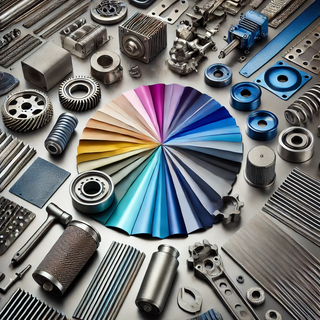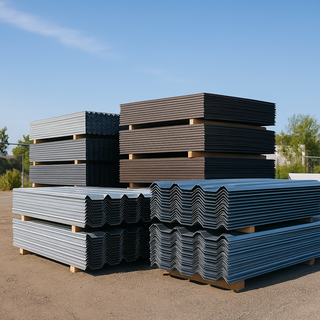Metal finishing is an integral part of the manufacturing and production industry, serving a dual purpose of beautifying and protecting metal products. This comprehensive guide compares several common metal finishing techniques, offering insights into how each can be utilized to meet specific project requirements.
Detailed Overview of Metal Finishing Techniques
Metal finishing is a broad term that encompasses a variety of processes designed to enhance the appearance and functionality of metal items. Below, we explore the most prevalent techniques, each offering distinct advantages and suitable for different industry applications.
Powder Coating
- Process Overview: Powder coating involves applying a powder material, typically a mixture of finely ground particles of pigment and resin, to a surface using an electrostatic charge. The coated item is then cured under heat to form a hard finish.
- Benefits: This technique offers one of the most durable finishes available, providing excellent resistance against scratches, chipping, fading, and wear. It is also environmentally friendly, emitting negligible volatile organic compounds.
- Applications: Due to its resilience, powder coating is preferred for items that require a durable finish, such as outdoor furniture, automotive parts, and appliances.
Anodizing
- Process Overview: Anodizing enhances the natural oxide layer on the surface of metal parts through an electrochemical process. This creates a finish that is integrated with the underlying metal.
- Benefits: Anodized finishes are known for their enhanced corrosion and wear resistance. They also provide better adhesion for paints and glues than bare metal does.
- Applications: Anodizing is typically used for aluminum and its alloys, making it ideal for applications such as aerospace components, architectural frameworks, and consumer electronics.
Galvanizing
- Process Overview: Galvanizing involves dipping steel or iron into molten zinc, forming a coating that is metallurgically bonded to the steel or iron surface.
- Benefits: The primary benefit of galvanizing is its robust protection against corrosion. The zinc acts as a sacrificial anode, so it corrodes instead of the base metal, thereby extending the life of the product.
- Applications: Galvanizing is commonly applied to steel structures like beams, sheets, and wires, especially those used in construction and outdoor environments.
Choosing the Right Metal Finishing Technique
The selection of an appropriate metal finishing technique depends on multiple factors, which are crucial for achieving the desired outcome:
- Environmental Conditions: Consider the environmental exposure the product will face, such as moisture, chemicals, or UV radiation.
- Durability Requirements: Assess the level of durability required, based on how the finished product will be used.
- Aesthetic Preferences: Different finishes offer varying aesthetic appeals; the choice may depend on whether a glossy, matte, or textured finish is desired.
- Budgetary Constraints: Economic considerations play a significant role, as some finishing techniques may be more cost-effective than others depending on the scale of the project.
Conclusion
Selecting the right metal finishing technique is critical for ensuring the aesthetic appeal, durability, and functionality of metal products. With this guide, you are equipped with the knowledge to make informed decisions, helping you choose the most appropriate finishing process for your specific needs.
Looking for professional advice on metal finishing options? Connect with our experts at TopTierMetals.com for personalized recommendations and high-quality finishing solutions tailored to your project requirements!






